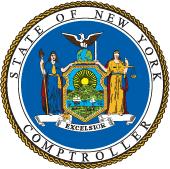Audit Objective
Did East Bloomfield Central School District (District) officials identify, report and implement needed remediation to reduce lead exposure in potable water outlets?
Audit Period
July 1, 2019 – September 30, 2024
Understanding the Program
Lead is a metal that was commonly used in plumbing and has since been identified as toxic to people, especially young children. Lead poisoning can cause neurological issues such as slowing children’s growth, causing learning and behavioral issues or causing hearing and speech problems which can lead to greater difficulty performing well in school and beyond.1 To aid in combating lead poisoning, New York State (NYS) requires all public school districts and Boards of Cooperative Educational Services (BOCES) to test potable (i.e., consumable) water for lead, report the results and implement necessary remediation. Testing and reporting for lead contamination began in 2016, and subsequent testing cycles have followed:
- Cycle One: September 6, 2016 to October 31, 2016.
- Cycle Two: January 1, 2020 to December 31, 2020 (extended to June 30, 2021 due to the COVID-19 pandemic).
- Cycle Three: January 1, 2023 to December 31, 2025.2
Audit Summary
District officials did not properly identify, report or implement needed remediation to reduce lead exposure in all potable water outlets as required by NYS Public Health Law and Department of Health (DOH) regulations.3 We determined 95 of the 246 (39 percent) water outlets we identified at select areas, that students, staff and the public may have access to and could consume water from, were not sampled or properly exempted by District officials for Cycle Two. Because there is no information on the lead levels of the 95 water outlets not sampled for testing or properly exempted by the District, we were unable to determine whether officials identified and remediated all water outlets that would have required it. This occurred because District officials did not include all water outlets in their sampling plan to identify outlets for sampling or exemption.
The District’s remedial action plan specified the controls implemented for water outlets the District exempted as well as how they secured against use and listed all water outlets that exceeded the lead action level. However, the plan did not contain enough detail to identify individual exempt outlets and not all implemented controls were considered effective by the DOH guidance. Furthermore, remediation efforts were not adequate for eight of the 31 water outlets (26 percent) that exceeded the lead action level.
While District officials notified the local health department and staff, parents and/or guardians of the 31 water outlets exceeding the lead action level from the initial test results, they did not notify them within the required time periods or notify them at all of any subsequent testing. Also, although officials posted the initial testing results on the District’s website within the required time period, officials did not post the subsequent testing results. Lastly, officials could not provide documentation showing that they reported each set of testing results through DOH’s Health Electronic Response Data System (HERDS) within the required time period.
This final report includes eight recommendations to that effect. District officials generally agreed with our findings and their response is included in Appendix C.
The Board of Education (Board) has the responsibility to initiate corrective action. A written corrective action plan (CAP) that addresses the findings and recommendations in this report must be prepared and provided to our office within 90 days, pursuant to Section 35 of the New York State General Municipal Law, Section 2116-a (3)(c) of the New York State Education Law and Section 170.12 of the Regulations of the Commissioner of Education. To the extent practicable, implementation of the CAP must begin by the end of the next fiscal year.
For more information on preparing and filing your CAP, please refer to our brochure, Responding to an OSC Audit Report, which you received with the draft audit report. The CAP should be posted on the District’s website for public review.
1 Lead Exposure Symptoms and Complications – https://www.cdc.gov/lead-prevention/symptoms-complications/index.html
2 As of December 22, 2022, schools are now required to test for lead in the water every three years beginning January 1, 2023 for Cycle Three.
3 Public Health Law section 1110; 10 NYCRR subpart 67-4 – Lead Testing in School Drinking Water
